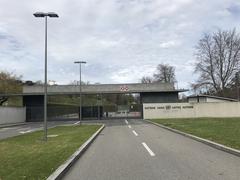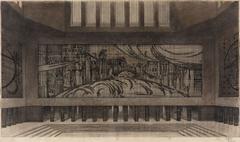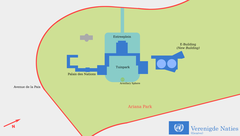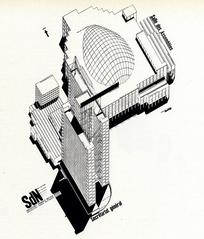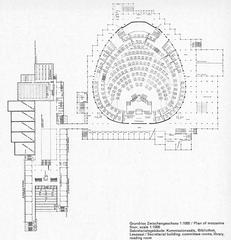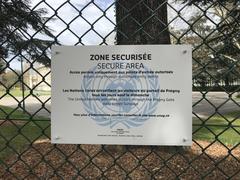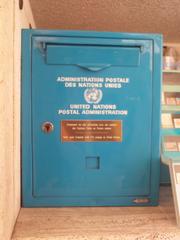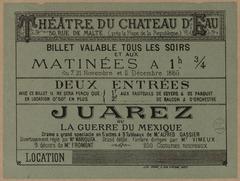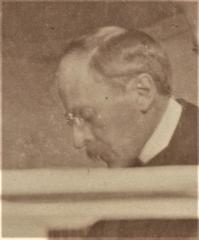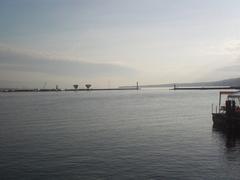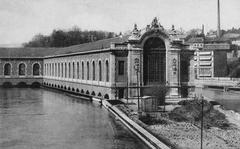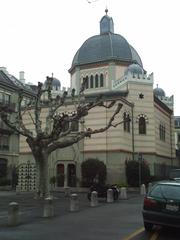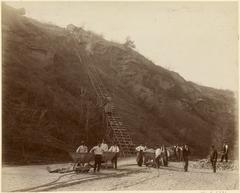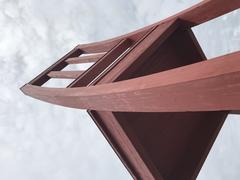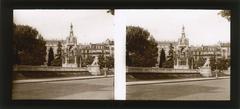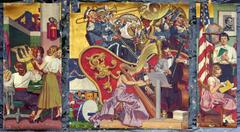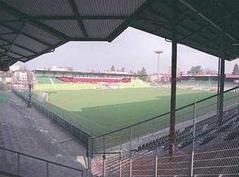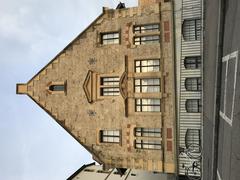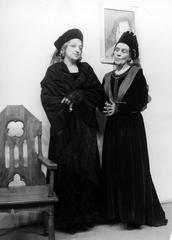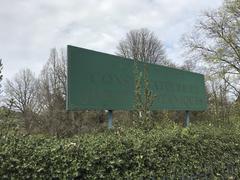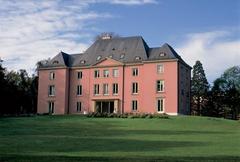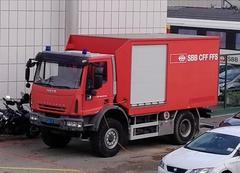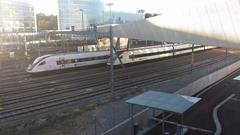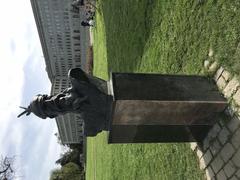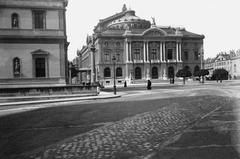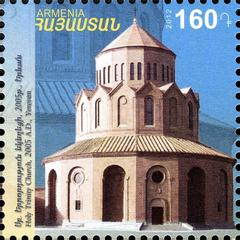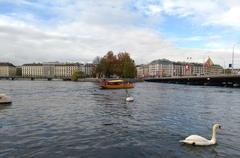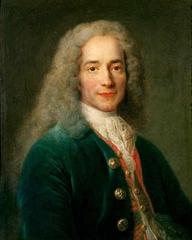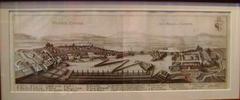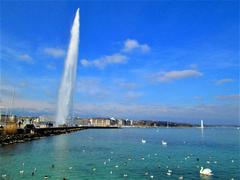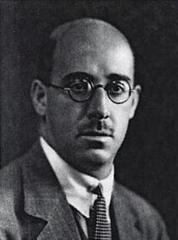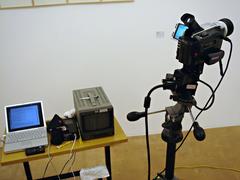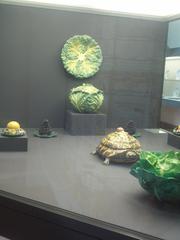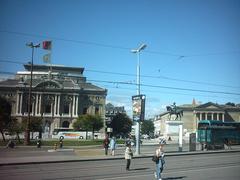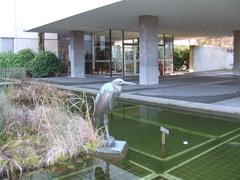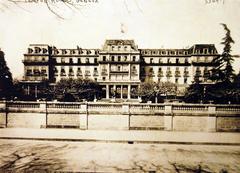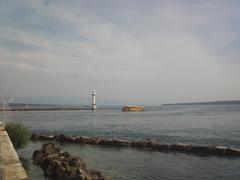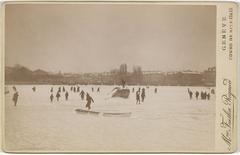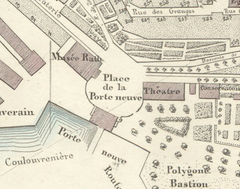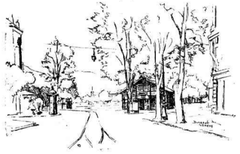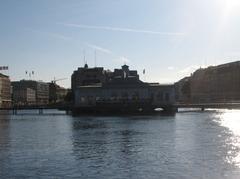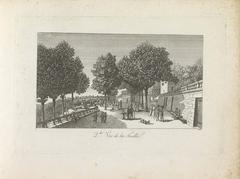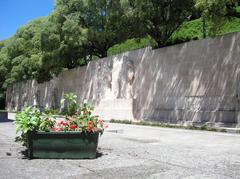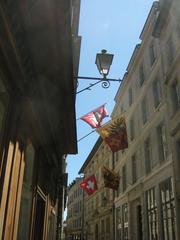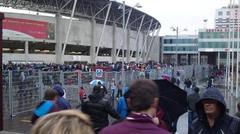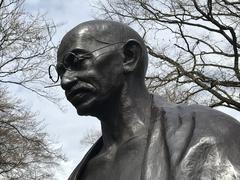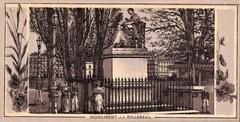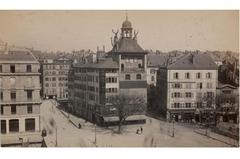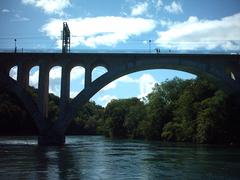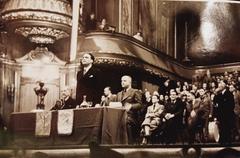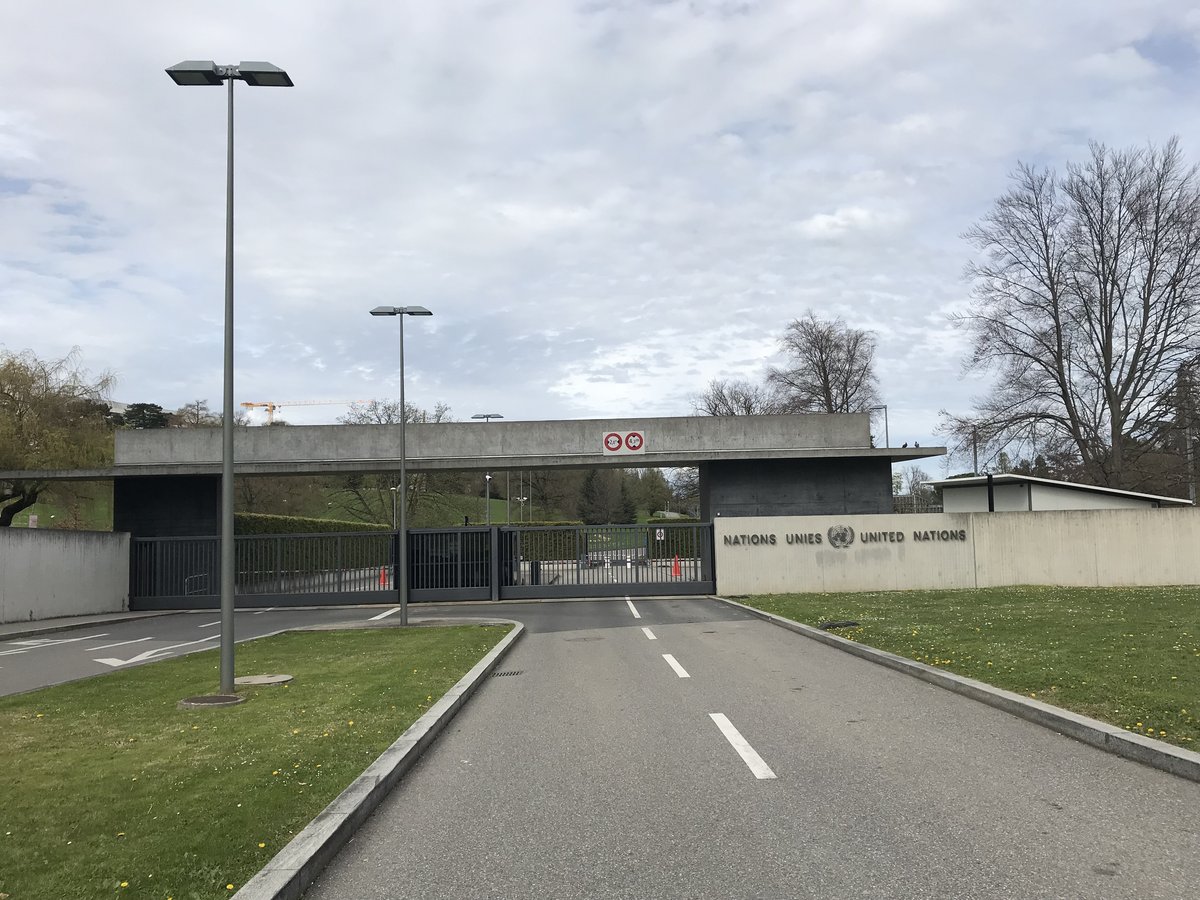
Palais des Nations Visiting Hours, Tickets, and Historical Significance
Date: 18/07/2024
Introduction
The Palais des Nations, located on the picturesque shores of Lake Geneva in Switzerland, is a monumental symbol of international diplomacy and peace. Established initially as the headquarters for the League of Nations in the aftermath of World War I, the Palais des Nations has evolved to serve as the European headquarters of the United Nations. The building itself, an architectural fusion of classical and modernist styles, stands as a testament to the collaborative spirit and the unwavering quest for global peace and cooperation. Visitors to this historic site can explore its rich history, architectural marvels, and the various artworks that adorn its halls. Whether you are a history enthusiast, a student of international relations, or simply a curious traveler, the Palais des Nations offers a unique and enriching experience. (UN Geneva)
Table of Contents
- Discover the History and Visiting Hours of Palais des Nations in Geneva
- A Legacy of Peace: Delving into the History of the Palais des Nations
- The Genesis: A Home for the League of Nations (1920-1939)
- A Shift in Global Order: The League’s Demise and the Palais’ Transition (1939-1946)
- A New Era: The Palais des Nations and the United Nations (1946-Present)
- Visiting the Palais des Nations
- Exploring the Architectural Marvels of Palais des Nations: Visiting Hours, Tickets, and More
- Complete Guide to Visiting Palais des Nations in Geneva: Hours, Tickets, History, and More
Discover the History and Visiting Hours of Palais des Nations in Geneva
A Legacy of Peace: Delving into the History of the Palais des Nations
The Palais des Nations, standing majestically on the shores of Lake Geneva, is not just an architectural marvel but a symbol of international cooperation and diplomacy. Its history is deeply intertwined with the quest for peace and the evolution of global governance in the 20th and 21st centuries.
The Genesis: A Home for the League of Nations (1920-1939)
The story of the Palais des Nations begins after the devastation of World War I. The League of Nations, the world’s first intergovernmental organization dedicated to maintaining world peace, was established in 1920. Geneva, known for its neutrality and humanitarian tradition, was chosen as the seat of this ambitious endeavor.
Initially housed in the Hôtel National, the League soon required a larger, purpose-built headquarters. An international architectural competition was launched in 1926, attracting 377 entries from 41 countries. The winning design, a blend of classical and modern styles, was a collaborative effort by several architects, reflecting the League’s spirit of international cooperation.
Construction of the Palais, a monumental undertaking, began in 1929. Despite financial challenges posed by the Great Depression, the building was inaugurated in 1936, showcasing the unwavering commitment to the League’s ideals.
A Shift in Global Order: The League’s Demise and the Palais’ Transition (1939-1946)
The outbreak of World War II in 1939 dealt a severe blow to the League of Nations. With the world plunged into another devastating conflict, the organization’s activities were effectively paralyzed. The Palais des Nations, intended as a beacon of peace, stood as a silent witness to the war’s devastating consequences.
Despite the League’s failure to prevent the war, the Palais des Nations continued to hold symbolic importance. During the war, it served as the headquarters of the International Red Cross. After the war’s end in 1945, the League of Nations was formally dissolved, making way for the creation of the United Nations.
A New Era: The Palais des Nations and the United Nations (1946-Present)
While the United Nations established its headquarters in New York City, the Palais des Nations was not forgotten. Recognizing its historical significance and Geneva’s continued role as a hub for international diplomacy, the UN and Switzerland signed an agreement in 1946. This agreement granted the UN functional immunity and allowed it to use the Palais des Nations as its European headquarters.
Since then, the Palais des Nations has been a vital center for the UN’s work. It houses the offices of various UN agencies and hosts numerous international conferences and meetings.
Visiting the Palais des Nations
For those interested in exploring this historical site, here are some key details:
- Visiting Hours: The Palais des Nations is generally open to visitors from Monday to Friday, 10 AM to 12 PM and 2 PM to 4 PM. However, it is advisable to check the official website for any changes in the schedule.
- Tickets: Tickets can be purchased at the entrance or online through the official Palais des Nations website. Prices vary depending on the type of tour and age group.
- Guided Tours: The Palais offers guided tours in multiple languages. These tours provide comprehensive insights into the history and significance of the building, as well as access to areas typically restricted to the public.
- Special Events: Throughout the year, the Palais des Nations hosts various special events, including exhibitions and lectures. Check the official website for the latest updates.
- Nearby Attractions: While in Geneva, visitors can also explore other historical sites such as the Jet d’Eau, St. Pierre Cathedral, and the International Red Cross and Red Crescent Museum.
- Photography: The Palais des Nations is a photographer’s dream, offering stunning architectural views and beautiful gardens. Be sure to bring your camera to capture these moments.
Exploring the Architectural Marvels of Palais des Nations: Visiting Hours, Tickets, and More
The Palais des Nations, with its imposing presence on the shores of Lake Geneva, is more than just a political headquarters. It’s an architectural marvel, a testament to international collaboration, and a symbol of peace. This article delves into the architectural features, layout, and essential visitor information for the Palais des Nations.
A Fusion of Styles: Classicism Meets Modernism
The architectural style of the Palais des Nations is a fascinating blend of classicism and modernism, reflecting the transitionary period in which it was built. The initial design, conceived in the 1920s, was rooted in a more classical approach. However, the final design, realized in the 1930s, incorporated elements of modernism, resulting in a unique and harmonious fusion.
- Classical Influences: The building’s symmetrical layout, grand facades, and use of traditional materials like stone and marble are reminiscent of classical architecture. The long colonnades, inspired by Greek and Roman temples, evoke a sense of grandeur and permanence.
- Modernist Sensibilities: The Palais also embraces modernist principles, particularly in its emphasis on functionality and use of new materials. The building’s large windows, flat roofs, and streamlined forms are characteristic of the modernist aesthetic. The use of reinforced concrete, a novel material at the time, allowed for the creation of large, open spaces.
A Collaborative Endeavor: Architects from Around the World
The Palais des Nations is a product of international collaboration, with architects from different countries contributing to its design. This global effort is reflected in the building’s diverse architectural vocabulary, which seamlessly blends various styles and influences.
The initial design competition, held in 1926, saw over 377 entries from 49 countries. While no single design was chosen, elements from several submissions were incorporated into the final plan. The primary architects credited with the building’s realization are:
- Henri Paul Nénot (France)
- Carlo Broggi (Italy)
- Julien Flegenheimer (Switzerland)
Navigating the Palais: A Complex and Symbolic Layout
The Palais des Nations is a sprawling complex, covering an area of 25 acres and comprising several wings and buildings added over the decades. The layout, while seemingly complex, is designed for functionality and symbolism, reflecting the organization’s commitment to international cooperation and dialogue.
- The Park: Surrounding the Palais is the Ariana Park, a sprawling green space gifted to the city of Geneva by Gustave Revilliod, the previous owner of the estate. The park, with its stunning views of Lake Geneva and the Alps, provides a serene backdrop to the Palais and serves as a symbol of peace and tranquility.
- The Cour d’Honneur (Court of Honour): This grand courtyard, flanked by symmetrical wings, serves as the ceremonial entrance to the Palais. The central focus of the courtyard is a monumental fountain, symbolizing the coming together of nations.
- The Assembly Hall: Located in the central part of the Palais, the Assembly Hall is the largest room in the complex, capable of accommodating over 2,000 people. This grand hall, with its impressive dome and tiered seating, is where the League of Nations Assembly and later, the United Nations General Assembly, held their meetings.
- The Council Chamber: Smaller than the Assembly Hall but equally impressive, the Council Chamber is known for its distinctive horseshoe-shaped table and ornate ceiling decorations. This room, designed for more intimate gatherings, was the meeting place of the League of Nations Council and later, the UN Security Council.
- Specialized Rooms and Wings: Beyond these main spaces, the Palais houses numerous specialized rooms and wings, each serving a specific function. These include committee rooms, conference halls, offices for delegations, and the UN library, one of the world’s most comprehensive collections of international law and diplomacy documents.
Visitor Information: Hours, Tickets, and Tips
When planning your visit to the Palais des Nations, it’s essential to be aware of the visiting hours, ticket prices, and other practical details to make the most of your experience.
- Visiting Hours: The Palais des Nations is generally open to visitors from Monday to Friday, with tours available in multiple languages. It’s advisable to check the official website for the most up-to-date visiting hours as they can vary.
- Tickets: Tickets for guided tours can be purchased online or at the visitor’s entrance. Prices vary depending on the type of tour and any special exhibitions that may be on display.
- Travel Tips: The Palais is easily accessible by public transport from downtown Geneva. Consider combining your visit with other nearby attractions such as the Red Cross Museum and the Botanical Gardens.
- Accessibility: The Palais des Nations is committed to ensuring accessibility for all visitors. Ramps, elevators, and other facilities are available to accommodate those with mobility challenges.
Art as a Universal Language: Murals, Sculptures, and Symbolic Works
The Palais des Nations is not just an architectural marvel; it’s also a repository of art and symbolism. Throughout the complex, visitors will encounter murals, sculptures, and decorative elements that reflect the ideals of peace, cooperation, and international understanding.
- The Ceiling of the Human Rights and Alliance of Civilizations Room: This stunning ceiling, a gift from Spain, is a masterpiece of contemporary art. Created by Miquel Barceló, the colorful, textured surface evokes a sense of dynamism and interconnectedness, symbolizing the universality of human rights.
- The Japanese Peace Bell: Located in the Ariana Park, the Japanese Peace Bell is a gift from Japan, symbolizing the country’s commitment to peace. The bell is rung twice a year, on the International Day of Peace and on the opening day of the UN General Assembly, as a call for global harmony.
- The Broken Chair Sculpture: Standing prominently across from the Palais, the Broken Chair sculpture is a powerful reminder of the impact of landmines and unexploded ordnance. The sculpture, created by Daniel Berset, serves as a call to action for disarmament and peace.
Complete Guide to Visiting Palais des Nations in Geneva: Hours, Tickets, History, and More
Introduction
The Palais des Nations in Geneva is not just a historical site but a living symbol of international diplomacy and cooperation. Whether you are a history buff, a political enthusiast, or a curious traveler, a visit to this United Nations office will be a memorable experience. This guide provides all the essential information for planning your visit, exploring the site, and understanding its significance.
Planning Your Visit
- Guided Tours: The best way to experience the Palais des Nations is through a guided tour. Tours are offered in several languages and provide fascinating insights into the history, work, and art collection of the UN. You can find the tour schedule and book your tickets online on the official UN Geneva website.
- Individual Visits: If you prefer exploring at your own pace, individual visits are possible on certain days. Be sure to check the UN Geneva website for the latest visiting hours and any restrictions.
- Accessibility: The Palais des Nations is accessible to visitors with disabilities. Wheelchairs are available upon request, and accessible restrooms and elevators are located throughout the complex.
- Security Check: All visitors must undergo a security check similar to airport security. Arrive early to allow ample time for this process.
Getting There
- Public Transportation: The Palais des Nations is easily accessible by public transportation. Trams 15 and 18 stop directly in front of the main entrance (Nations stop).
- Bus: Bus lines 8, 28, F, V, and Z also have stops near the Palais.
- Car: If you’re driving, limited parking is available at the Pregny Gate, subject to availability. Consider using public transportation to avoid parking hassles.
While You’re There
- Photography: Photography is permitted in most areas of the Palais des Nations for personal use. However, flash photography and tripods are generally prohibited.
- Dress Code: A respectful dress code is required for entering the Palais des Nations. Avoid wearing shorts, sleeveless tops, flip-flops, or any clothing with offensive imagery.
- Food and Drinks: A cafeteria and restaurant are available within the Palais des Nations complex, offering a variety of food and beverage options.
- Gift Shop: Don’t forget to visit the UN Geneva gift shop, where you can find unique souvenirs, books, and gifts related to the UN and its work.
History and Cultural Significance
The Palais des Nations was built between 1929 and 1938 to serve as the headquarters of the League of Nations. After the League was dissolved, it became the European headquarters of the United Nations. The building itself is a masterpiece of 20th-century architecture and houses significant artworks and historical documents. It stands as a symbol of peace and international cooperation.
Nearby Attractions
While visiting the Palais des Nations, take some time to explore nearby attractions such as the Ariana Museum, the Red Cross and Red Crescent Museum, and the beautiful Ariana Park. These sites offer additional cultural and historical insights into Geneva’s role in international diplomacy.
Unique Aspects
- Special Events: Throughout the year, the Palais des Nations hosts various public meetings, exhibitions, and conferences. Check the UN Geneva website for upcoming events during your visit.
- Photographic Spots: Don’t miss the iconic Broken Chair sculpture located near the main entrance. This powerful piece of art symbolizes opposition to landmines and explosive remnants of war.
Tips for a Memorable Experience
- Book in Advance: Guided tours often sell out, especially during peak season. Book your tickets online in advance to secure your spot.
- Allow Ample Time: Exploring the Palais des Nations can easily take a few hours. Allocate sufficient time to fully appreciate the experience.
- Attend a Meeting: If possible, try to attend a public meeting or event at the Palais des Nations to witness the UN in action. Check the UN Geneva website for the schedule of events.
- Engage with the Exhibits: Take your time to read the information panels, watch the multimedia presentations, and engage with the interactive exhibits to deepen your understanding of the UN’s work.
- Reflect on the Significance: The Palais des Nations is not just a building; it’s a symbol of international cooperation and diplomacy. Take a moment to reflect on its significance and the important work that takes place within its walls.
Frequently Asked Questions (FAQ)
Q: What are the Palais des Nations visiting hours?
A: Visiting hours vary, so it’s best to check the UN Geneva website for the most current information.
Q: How can I book tickets for a guided tour?
A: Tickets can be booked online through the official UN Geneva website.
Q: Is the Palais des Nations accessible for people with disabilities?
A: Yes, the Palais des Nations is fully accessible, with wheelchairs available upon request and accessible facilities throughout the complex.
Q: Can I take photos during my visit?
A: Photography is allowed in most areas for personal use, but flash photography and tripods are generally prohibited.
Conclusion
In conclusion, the Palais des Nations is not merely a building but a living monument to the ideals of international cooperation and peace. From its origins as the headquarters of the League of Nations to its current role within the United Nations, the Palais des Nations has been at the heart of global diplomacy for nearly a century. Visitors can delve into the rich history, witness the architectural splendor, and engage with the symbolic artworks that reflect the building’s enduring significance. Whether attending a guided tour, exploring the serene Ariana Park, or participating in a special event, a visit to the Palais des Nations offers a profound and memorable journey through the annals of global governance. For the latest information on visiting hours, ticket prices, and special events, it is always advisable to check the official UN Geneva website. (UN Geneva)
References
- Discover the History and Visiting Hours of Palais des Nations in Geneva, 2024 UN Geneva
- Exploring the Architectural Marvels of Palais des Nations - Visiting Hours, Tickets, and More, 2024 UN Geneva
- Complete Guide to Visiting Palais des Nations in Geneva - Hours, Tickets, History, and More, 2024 UN Geneva
